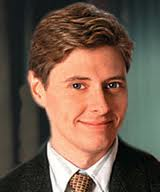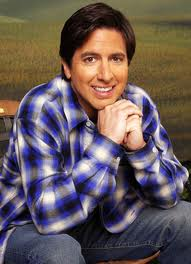Lowry on blacks and murder
Robert S. writes:
Based on Rich Lowry’s latest column, we can say that this is his position on race and murder: murders of blacks by whites are the worst; murders of blacks by blacks are deplorable and overlooked; and murders of whites by blacks should not even be mentioned.

LA replies:
The triviality and smallness of Lowry’s mind is here on full display. Not a single sentence in this column goes outside mainstream-conservative tropes that have been constantly repeated during the Martin-Zimmerman case.
I sometimes wonder about Lowry: What is it like to be so insignificant? How does it feel to be such a nothing?
- end of initial entry -
Paul K. writes:
Lowry wrote that column before the whole Derbyshire flap, so I guess he was laying out the boundaries of permissible discussion. As Robert S. notes, it’s apparently okay to mention the extraordinarily high incidence of blacks murdering blacks and even to mention the extraordinary high incidence of murder committed by blacks generally, but not permissible to recommend that anyone take protective measures based on this fact.
When I look at Lowry’s portrait, I feel I’m looking at the photo of a winsome but ineffectual character on a TV sitcom, but I can’t figure out which performer it is that he resembles. I thought perhaps Michael J. Fox, but Fox has a more penetrating and determined look about him.
April 26
Ron K. writes:
A running story on VFR is never complete, is it, until some reader contributes his own related synchronicity.
Thanks to a busy Easter weekend I was offline and happily unaware of the Saturday firing of John Derbyshire until the wee hours of Monday. Nevertheless the subject of black crime arose, as on our way to a family get-together in the exurbs we swung by Northeast Minneapolis to pick up my carless brother-in-law.
He told us how he likes his new neighborhood, which is a short walk from the bridge over the Mississippi separating the North and Northeast sectors of the city. We noticed that the bridge was no longer merely “closed for repairs,” but had been torn out and was being rebuilt from scratch—and much too quickly for the people of Northeast.
You see, both neighborhoods changed greatly over the last 20 years. Northeast slowly shifted from a humble white Catholic multiethnic enclave to a white hipster art colony, as the latter type still appreciates living cheaply, safely and whitely in the city. During this time, North Minneapolis also changed—from a comparatively benign Minnesota-style black neighborhood to a full-bore ghetto à la Chicago. (Blind hatred of whites is not a factor here—yet!) Kids killed by stray bullets in turf battles is common now.
So we wondered what would happen when the new bridge opens. After our transit strike in 2004, the head of a questionable local “taxpayers” organization (more likely a shill for the road-construction industry) crowed in an op-ed how the crime rate in the inner-ring suburbs went down when the buses weren’t running. He was silent a couple years later when the bridge was first closed, and the crime rate in “Nordeast” went down by a much greater amount. (Even thugs prefer cars to buses!)
So reading about l’affaire Derbyshire later that night was especially amusing, considering we had been discussing the fate of—I kid you not—the Lowry Avenue bridge!
Also Wikipedia article on Lowry Avenue Bridge.
Jeremy G. writes:
“I feel I’m looking at the photo of a winsome but ineffectual character on a TV sitcom, but I can’t figure out which performer it is that he resembles. ”
He looks like Grant Shaud, who played Miles Silverberg on the Murphy Brown sitcom.
Sage McLaughlin writes:
Paul K. makes a funny observation—Rich Lowry really does look like one of those male zeroes you find on network TV sitcoms. He doesn’t name which one, but my vote goes to the lead character from News Radio, Dave Nelson:

The show’s milquetoast protagonist was the too-young station manager of a New York City news radio station. One of the grating things about the character was that he was a doormat for his unlikable, aggressively feminist big-city girlfriend (who also worked at the news station where the show was set). There’s a superficial analogy in there somewhere, but it’s too early in the day for me to bother teasing it out.
Sage McLaughlin writes:
There’s also the beta of all betas, Ray Romano of Everybody Loves Raymond, whose wife on the show is played by Patricia Heaton, who is the founder of mainstream conservative favorite “Feminists for Life.” The resemblance to Ramano (whose character really is the ultimate nothing) is actually sort of striking.


Posted by Lawrence Auster at April 25, 2012 08:28 PM | Send

